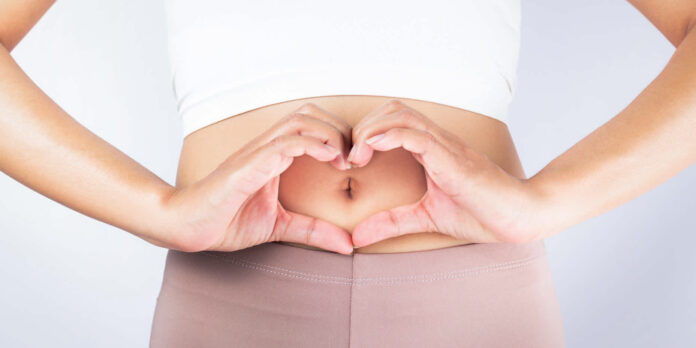Orlistat helps block fat absorption in the digestive system, assisting with weight loss. However, to make the most of this medication, your diet must support its function. Eating the right foods while taking orlistat not only improves weight loss but also reduces the risk of side effects such as oily stools, flatulence, and frequent bowel movements.
Focus on Low-Fat Meals
Orlistat works by preventing the absorption of about 25% of dietary fat. When fat intake stays high, undigested fat moves through the intestines, leading to unpleasant side effects. To avoid this, keep each meal under 15 grams of fat. You don’t need to eliminate fat completely, but you must reduce it significantly.
Use lean cooking methods like grilling, baking, steaming, or boiling. Avoid frying or sautéing in oil. Stick to lean proteins, low-fat dairy, and whole foods that don’t come packed with hidden fats.
Recommended Low-Fat Foods:
- Skinless chicken or turkey
- Lean cuts of beef or pork (such as sirloin or tenderloin)
- Egg whites
- Low-fat or fat-free yogurt
- Skim milk or plant-based alternatives with low fat
- Fish (especially white fish like cod or tilapia)
Increase Fiber Intake
Fiber slows digestion and helps control appetite. It also improves bowel function, which becomes important while taking orlistat. High-fiber foods make you feel full longer, which supports calorie control and helps avoid overeating.
Start your day with high-fiber cereals or oatmeal. Add fruits and vegetables to every meal. Opt for whole grains instead of white bread, white rice, or pasta made from refined flour.
High-Fiber Foods to Include:
- Oats
- Barley
- Beans and lentils
- Apples, pears, and berries (with skin)
- Broccoli, carrots, and leafy greens
- Whole-grain bread, brown rice, quinoa
Spread Fat Intake Evenly
Even on a reduced-fat diet, some fat remains necessary. Instead of eating a larger amount of fat in one meal, distribute it evenly throughout the day. This strategy allows orlistat 120 mg weight loss to block fat absorption effectively without overwhelming your system.
If you eat three main meals and one or two snacks daily, include small portions of healthy fat sources in each. Choose monounsaturated or polyunsaturated fats in moderation.
Good Fat Sources in Small Portions:
- Avocados (a few slices)
- Nuts (a small handful)
- Seeds like chia or flax (1–2 teaspoons)
- Olive oil (1 teaspoon for salad dressing)
Avoid High-Fat, Processed Foods
Processed foods often contain hidden fats that push your daily limit too high. Even foods labeled “healthy” can sneak in excessive fat, sugar, or salt. Avoid fast food, pastries, creamy sauces, and fried snacks. Check labels carefully when buying packaged products.
Orlistat doesn’t block all the effects of junk food. Eating poorly while on it increases side effects and stalls weight loss progress. Choose whole foods whenever possible, and cook meals at home to stay in control of your ingredients.
Balance Carbohydrates Wisely
While orlistat targets fat, your overall calorie balance still affects weight loss. Too many refined carbs can sabotage progress. Stick to complex carbohydrates that digest slowly and keep blood sugar stable. These carbs also often come packed with fiber, which helps you feel satisfied longer.
Limit white bread, sugary cereals, baked goods, and soda. Focus instead on complex carbs that support steady energy and fewer cravings.
Better Carb Choices:
- Sweet potatoes
- Quinoa
- Lentils and beans
- Brown rice
- Vegetables
- Whole-grain pasta
Protein for Satiety and Muscle Support
Protein keeps hunger in check and helps preserve muscle during weight loss. Include lean protein at each meal to maintain metabolism and prevent muscle loss. Choose plant-based proteins or low-fat animal sources.
Protein also plays a role in tissue repair and immune health, both of which matter during any lifestyle change. Eating enough protein helps you stick with your diet and stay active.
Lean Protein Options:
- Grilled chicken
- Tuna (packed in water)
- Tofu or tempeh
- Cottage cheese (low-fat)
- Greek yogurt (non-fat or low-fat)
Don’t Skip Meals
Skipping meals leads to overeating later, and that often results in eating the wrong kinds of food. Orlistat works best when taken with meals containing some fat. If you skip meals or eat meals without any fat, orlistat has nothing to work on and becomes less effective.
Plan balanced meals with small amounts of fat so the medication can perform its job. Regular eating also keeps energy levels stable and supports better food choices throughout the day.
Limit Sugar and Simple Carbs
While sugar doesn’t contain fat, it contributes empty calories. Excess sugar gets stored as fat, making weight loss more difficult. Limit sweets, sugary drinks, and desserts. Use fruit to satisfy sweet cravings, or try low-calorie alternatives that don’t spike blood sugar.
Too much sugar can also increase hunger shortly after eating. Keeping sugar intake low helps you stay in control of your appetite and energy.
Include Micronutrients
Orlistat can reduce the absorption of fat-soluble vitamins—A, D, E, and K. To prevent deficiencies, take a multivitamin supplement daily, but not at the same time as the medication. Take the vitamin at least two hours before or after an orlistat dose.
You should also eat plenty of colorful fruits and vegetables to supply your body with the minerals and antioxidants it needs. These nutrients support metabolism, immunity, and overall health.
Colorful Choices That Add Nutrition:
- Spinach and kale (vitamin K)
- Carrots (vitamin A)
- Bell peppers and oranges (vitamin C)
- Berries (antioxidants)
- Mushrooms (vitamin D, depending on type)
Stay Hydrated
Drinking enough water supports digestion and helps move waste through your system. Since orlistat affects how your body processes fat, hydration becomes even more important. Water can also help control hunger and improve your energy levels.
Start your day with a glass of water, and keep a bottle nearby throughout the day. Limit sugary drinks, sodas, and alcohol, which only add calories without helping weight loss.
Snack Smart
Snacking doesn’t need to stop while taking orlistat. You just need to make better choices. Avoid chips, crackers, and pastries. Instead, go for low-fat, high-fiber snacks that satisfy hunger without causing side effects.
Healthy Snack Ideas:
- Baby carrots with hummus
- Apple slices with a tablespoon of peanut butter
- A boiled egg and a few cherry tomatoes
- A small banana with a handful of almonds
- Low-fat yogurt with fresh berries
Final Tips for Better Results
- Take orlistat with meals that contain fat – It only works when fat is present.
- Stick to a calorie deficit – Medication supports your efforts, but it won’t do all the work.
- Keep a food journal – Tracking meals helps stay within fat limits.
- Weigh in weekly – This keeps you focused on long-term trends, not daily changes.
- Consult a healthcare provider regularly – Adjust your diet and supplements based on their guidance.
At Synergy Pharmacy, we are committed to supporting your weight management journey with trusted information and advice tailored to your needs. Combining orlistat with the right dietary habits enhances your results safely and effectively.
Conclusion
Orlistat can aid weight loss, but it works best with the right eating habits. Choose low-fat meals, add plenty of fiber, and spread healthy fats evenly through the day. Avoid processed food, sugary snacks, and high-fat dishes that can trigger side effects. Focus on nourishing, satisfying meals that fuel your body and support the medication’s fat-blocking action. Eating smart, staying consistent, and listening to your body will lead to the best results while on orlistat.
Frequently Asked Questions (FAQs)
1. How does orlistat work to help with weight loss?
Orlistat blocks about 25% of the fat you consume from being absorbed in your digestive system. This means fewer calories from fat are absorbed, helping support weight loss when combined with a reduced-fat diet.
2. Can I take orlistat without changing my diet?
For best results and to reduce side effects, it’s important to follow a low-fat, balanced diet while taking orlistat. Eating too much fat can lead to unpleasant digestive symptoms and reduce the medication’s effectiveness.
3. What are common side effects of orlistat?
Some users experience oily or fatty stools, flatulence, and frequent bowel movements, especially if dietary fat intake is too high. These side effects usually improve when fat intake is controlled and spread evenly throughout the day.
4. Should I take vitamin supplements while on orlistat?
Yes, orlistat can reduce absorption of fat-soluble vitamins (A, D, E, and K). Taking a daily multivitamin supplement, separated by at least two hours from orlistat doses, is recommended to prevent deficiencies.
5. How often should I consult a healthcare professional while using orlistat?
Regular consultations with healthcare providers are important to monitor your progress, adjust your diet, and ensure safe use of orlistat alongside any other treatments or supplements.































